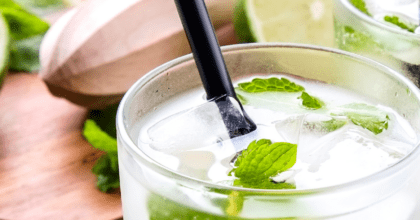Craft beer moving into the UK mainstream? 13 million Brits have consumed a craft beer in the past six months
Following the introduction of the Small Breweries’ Relief in June 2002, there has been a boom in the number of UK breweries, and many are now moving the craft movement firmly up the consumer agenda. Proving this, a new report from Mintel reveals the continued health of the craft beer movement in the UK, with a quarter (25%) of British adults – equating to some 13 million – stating that they have consumed a craft beer over the past six months.
As the segment develops and its popularity increases, it is moving towards the overground and mainstream consumption. Craft beers have forged associations with high quality, so much so that over a third (35%) of beer drinkers think that they are worth paying more for.
Recent industry discussions on the subject have revolved around the current lack of craft beer’s definition in the UK, or indeed whether such a definition is needed at all. Mintel’s research highlights that this lack of clarity may in fact be holding the category back: while half (50%) of beer drinkers expect craft beers to taste better, 40% admit they are unsure about what the term ‘craft’ beer actually means. Educating consumers about the segment and what it stands for is important as 45% of beer drinkers agree that these beers would be more appealing if they knew more about them.
Indeed, craft beer today appears to be more about production methods and quality than size, as 40% of beer drinkers are interested in trying a craft-style beer from a large brewer.
Chris Wisson, Senior Drinks Analyst at Mintel, said:
“Far from being a niche area reserved for small brewers, craft beers are actually something which larger brewers can also tap into. While it was thought that the craft movement was going to be bad news for leading brewers, the fact that 40% of beer drinkers would be interested in trying one from a large brewer proves that craft beer does not necessarily need to be limited to smaller operators. Rather than focusing on size, craft should be more of an ethos which stands for high quality and artisan skill, giving the consumer a different drinking experience.”
While the growth of craft beer is encouraging, the overall beer market continues to find itself in a state of flux. The amount of people drinking beer has remained broadly the same in 2013 against the previous year – some 71% of UK adults now drink beer and 63% of beer drinkers claim do so at least once a week.
However, the actual amount being consumed is decreasing in line with the overall fall in alcoholic drinks consumption. Despite the Government removing the beer tax escalator in March 2013, some 31% of beer drinkers claim to be drinking less beer than they were a year ago, compared to just 13% claiming to drink more. Volume sales also reflect this downturn, with volumes falling 3.4% year on year to 2013 from 4.24 billion litres in 2012 to 4.09 billion in 2013.
Against this background, further volume declines are forecast in the market to 3.49 billion litres in 2018. Inflation and trading up to premium beers are expected to prop up value sales to a degree and the market is expected to reach £18.4 billion by 2018, rising from its current level of £16.7 billion.
Lager is the most popular type of beer, drunk by 58% of adults in the past six months. It is the only type of beer to show significantly higher in-home usage than out of home (47% against 31%), reflecting the difference in the cost of drinking in the on- and off-trade. Ale is also showing signs of growth – 31% of adults now drink ale – as many cask and premium bottled ales are achieving reasonably encouraging growth. On the other hand, stout is struggling as many consumers gravitate towards ‘lighter’ drinks such as golden ales.
Another growing segment is the spirit beer category, drunk by just under one in five (18%) adults. However, it seems that spirit beers may still have a way to go to convince beer drinkers overall as just 26% claim to find them appealing and a further 49% say they think beer should be left unflavoured.
“The growth of craft beer taps into an overall trend of many beer drinkers becoming more demanding when it comes to the quality of their beer. The fact that two thirds of them think that it is worth paying more for better quality beer goes some way to explaining why premium brands such as Peroni go from strength to strength despite their higher price. As prices of many drinks continue to go up, many drinkers are looking for discernibly higher quality to justify the cost. Focusing on the quality of ingredients such as hops and the brewing process should help brands to convey their superior quality to beer drinkers.” Wisson concludes.
For the latest in consumer and industry news, top trends and market perspectives, stay tuned to Mintel News featuring commentary from Mintel’s team of global category analysts.
-
Mintel StoreGet smart fast with our exclusive market research reports, delivering the latest data, innovation, trends and strategic recommendations....View reports
-
Mintel LeapMintel Leap is a revolutionary new AI-powered platform that will transform your research process....Book a demo







































